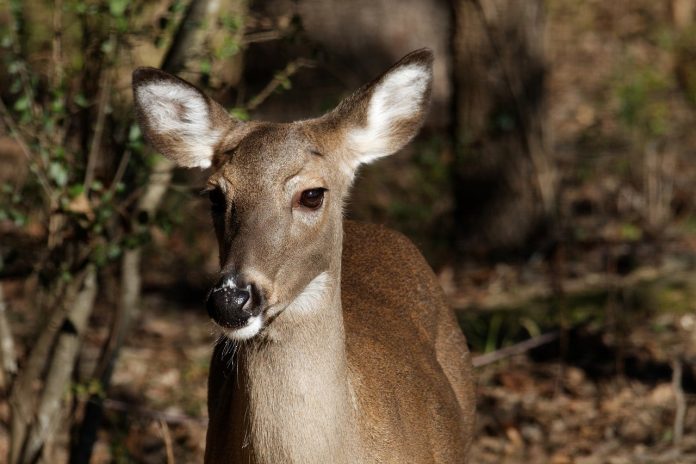COLUMBUS — Testing for chronic wasting disease in Ohio’s white-tailed deer population will continue during the 2021-22 hunting season, according to the Ohio Department of Natural Resources Division of Wildlife.
Chronic wasting disease is a fatal neurological disease that affects white-tailed deer and other similar species, including mule deer, elk and moose. According to the Centers for Disease Control and Prevention, there is no strong evidence that chronic wasting disease is transmissible to humans.
Two chronic wasting disease-positive wild deer were confirmed during the 2020-21 hunting season in Wyandot County. A disease surveillance area has been established in response to the confirmed cases, and intensive monitoring will continue for at least three years in Wyandot County as well as portions of Hardin and Marion counties.
Specific regulations apply to hunters who harvest a deer in this location, including mandatory testing Nov. 6-7, Nov. 13-14, and the seven-day gun season, Nov. 29 to Dec. 5.
In-person sampling is available at the Big Island Wildlife Area Headquarters, Killdeer Plains Wildlife Area Headquarters and the Wyandot County Fairgrounds on those dates. Self-serve kiosks are also available. A list of kiosk locations and instructions can be found at ohiodnr.gov/cwd.
Regulations
In addition to mandatory testing, the following regulations apply within the disease surveillance area:
- Prohibits the placement of or use of salt mineral supplement, grain, fruit, vegetables or other feed to attract or feed deer;
- Prohibits hunting of deer by the aid of salt, mineral supplement, grain, fruit, vegetables or other feed; and
- Prohibits the removal of a complete carcass or high-risk parts from the disease surveillance area, unless the carcass complies with deer carcass regulations or the carcass is delivered to a certified taxidermist or processor within 24 hours of leaving the area.
Additional information on carcass regulations and a complete list of certified processors and taxidermists can be found at wildohio.gov.
Normal agricultural activities, including feeding of domestic animals, as well as hunting deer over food plots, naturally occurring or cultivated plants, and agriculture crops are not prohibited.
To help protect Ohio’s deer herd from chronic wasting disease, hunters should properly dispose of their deer carcasses by double-bagging all high-risk parts (brain, spinal cord, eyes, and lymphoid tissue) and setting it out with their household garbage for trash pickup.
Those without trash pickup can double bag the carcass and take it to a municipal solid waste landfill or bury the carcass at least three feet deep on the property of harvest.
The proper handling of carcasses, trims and parts dramatically decreases the odds of spreading chronic wasting disease.
The Division of Wildlife has conducted routine surveillance for chronic wasting disease since 2002, with more than 30,000 deer tested. Chronic wasting disease has previously been detected at captive deer breeding facilities in Ohio. Chronic wasting disease has been detected in 26 states and four Canadian provinces.
Hunters may test a harvested deer at the Ohio Department of Agriculture’s Animal Disease Diagnostic Laboratory for a fee. Call 614-728-6220 for more information.










